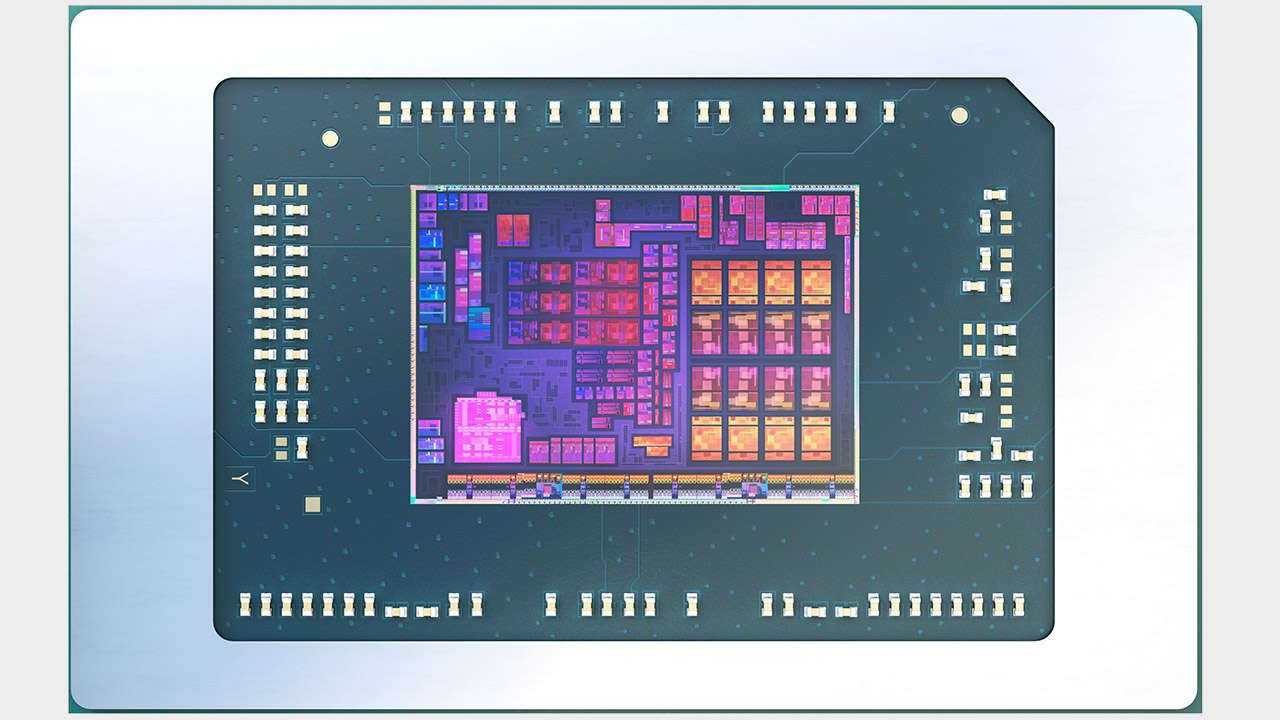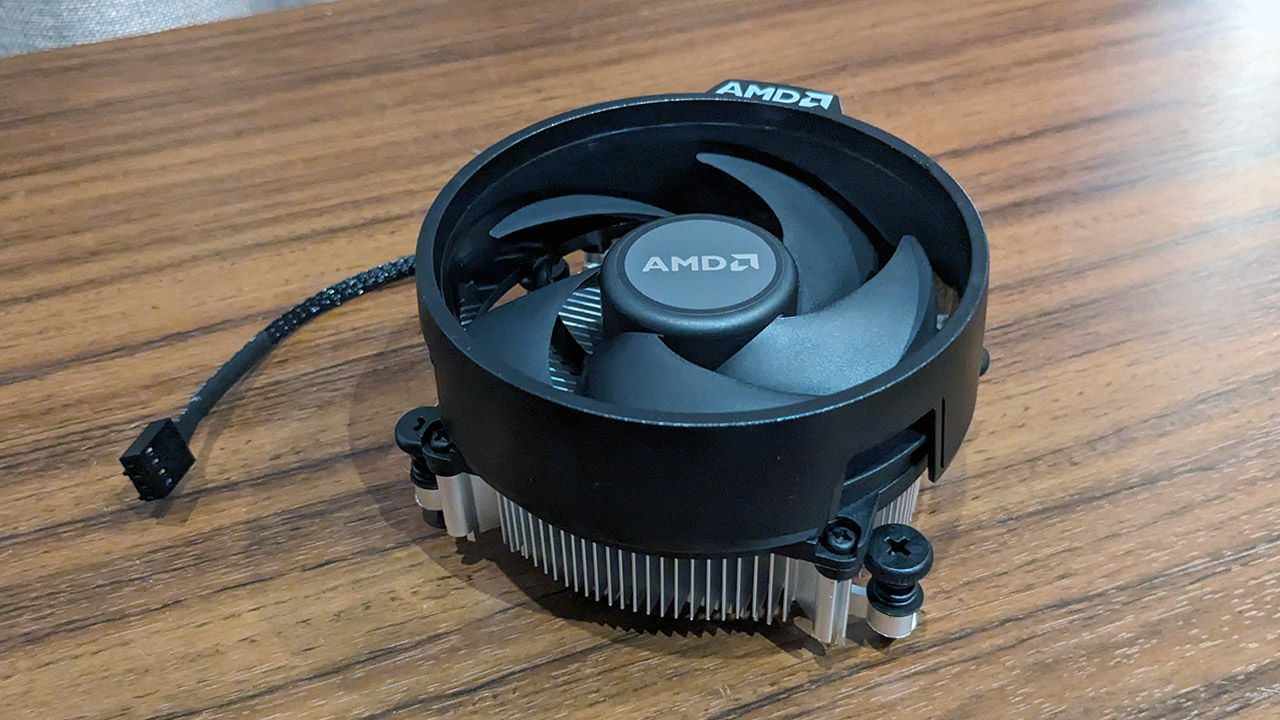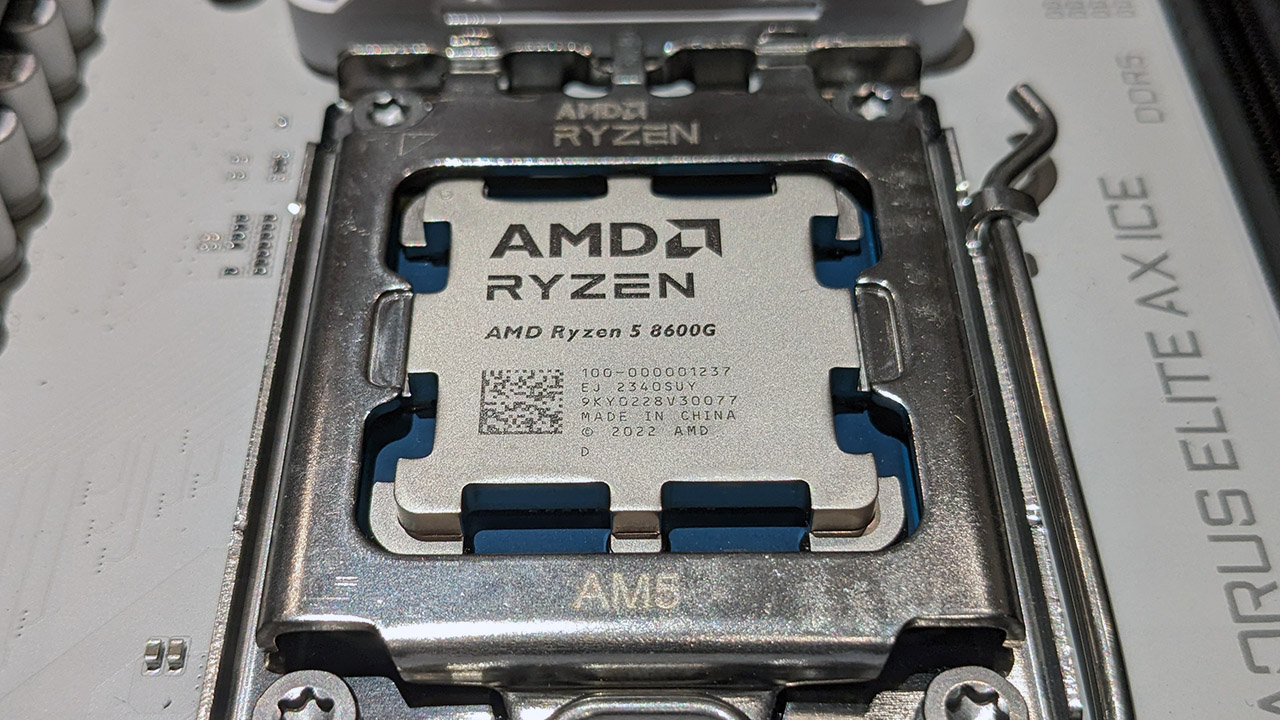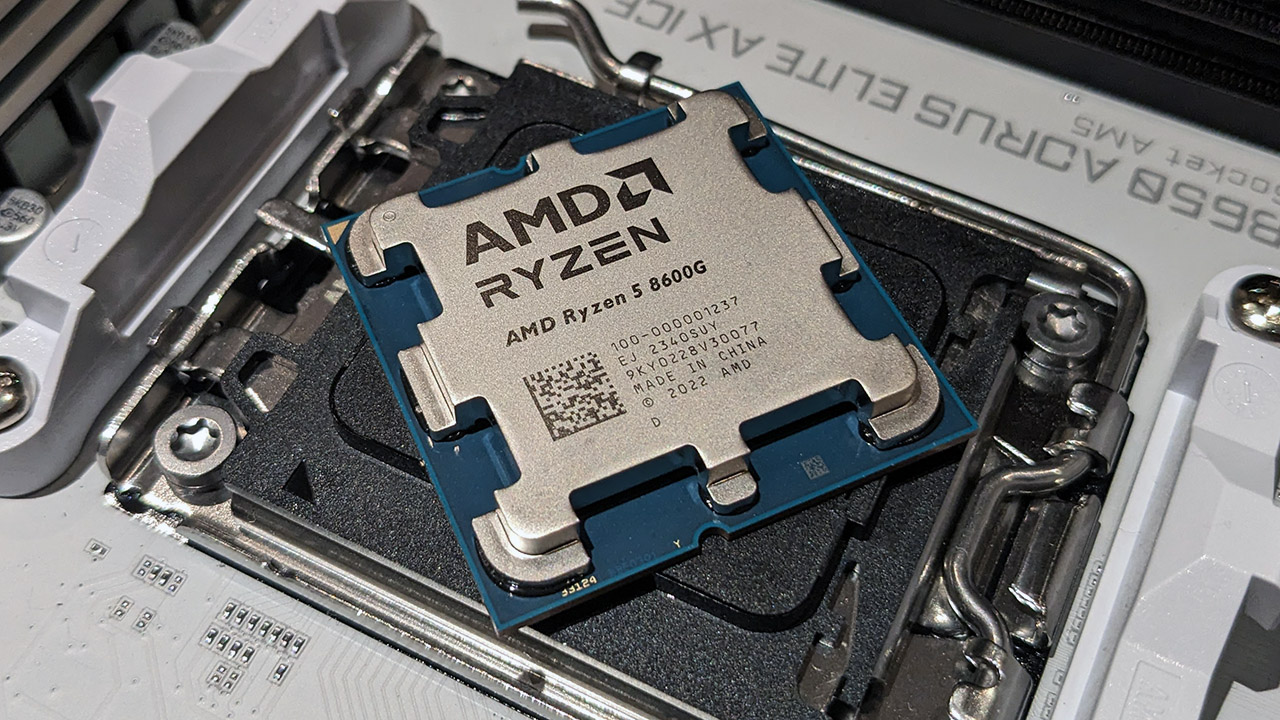Our Verdict
If your budget is tight, the Ryzen 5 8600G cannot be beaten. At this price you'll get a capable all rounder with excellent power efficiency and the ability to play just about any game at 1080p, even if you do have to lower the settings a bit.
For
- Very good integrated graphics
- Great price
- Excellent power efficiency
- Integrated AI co-processor
Against
- 780M graphics would have made it really special
- Not the best option for use with a discrete GPU
PC Gamer's got your back
If you're putting together a new gaming system on a tight budget, but don't want to spend the money on a current generation graphics card to go with it, AMD's Ryzen 5 8600G may well be the solution for you.
Every PC gamer can appreciate a machine that offers smooth 4K ray traced performance with the best graphics cards, but casual gamers firing up the likes of Minecraft, Valorant, or Fortnite won't ever consider buying PCs that cost a month's wage or more. They just want to turn on the PC, click on an icon and jump into the action. The 8600G is designed for just that kind of use case.
Just yesterday I reviewed the Ryzen 7 8700G. It features the most powerful desktop integrated graphics ever, but even that chip at $329 might be a step too far for many gamers, especially once you factor in the cost of a new motherboard and DDR5 memory. At $229, the Ryzen 5 8600G is promoted as a still capable 1080p gaming option.
And let's not forget, 1080p remains by far the most popular gaming resolution.
The 8600G is an affordable six-core variant of AMD's exciting Phoenix range of laptop, handheld, and now desktop APUs. It doesn't have the grunt of its more expensive sibling, but it's still a capable 1080p gaming option that destroys everything else in its price range.
Apart from the 8700G and 8600G, the Phoenix APU range includes the entry level 8500G and (for now) OEM only 8300G. They come with a mix of Zen 4 and Zen 4c cores, but more importantly for gamers, their Radeon 740M graphics have just 4 CU's activated. That's half the CU count of the 8600G, meaning they're not going to get anywhere near the gaming performance of either the 8700G or this 8600G.

The $229 Ryzen 5 8600G is a six-core offering that's based on the Zen 4 architecture, but it has several key differences compared to its Ryzen 7000-series counterparts. The 8600G uses a monolithic die and it's built on a more advanced 4nm process. It's also got half the cache of six-core Ryzen 7000-series CPUs, at 16MB vs 32MB.
It comes with a base clock of 4.3GHz, a boost clock of 5.0GHz and a 65W TDP. That's not dissimilar to the Ryzen 5 7600 and in fact its base clock is a surprising 500MHz higher, though the 7600 has a 100MHz higher boost clock.

Like the 8700G, the 8600G lacks PCIe 5.0 support and is configured with a PCIe 4.0 x8 connection for a graphics card. That means little at this point in time, but we'll have to wait and see how that affects the performance of future PCIe 5.0 x16 cards. It also means you won't be able to extract the full performance from a PCIe 5.0 x4 SSD.
A welcome, if for now untapped addition to the 8600G is AMD's XDNA Neural Processing Unit. As you've no doubt seen and read, AI is all the rage and local AI processing will potentially become more relevant as the software ecosystem matures. Who can say? Integrated AI might become a must-have so I'll give AMD a tick for including it. Intel is on the bandwagon, too. Maybe if you build it, they will come…
| Header Cell - Column 0 | Ryzen 7 8700G | Ryzen 5 8600G | Ryzen 5 5600G |
|---|---|---|---|
| Architecture | Zen 4 | Zen 4 | Zen 3 |
| Cores / Threads | 8 / 16 | 6 / 12 | 6 / 12 |
| Base / Boost Clock (GHz) | 4.2 / 5.1 | 4.3 / 5.0 | 3.9 / 4.4 |
| Integrated Graphics | Radeon 780M (12 CU) | Radeon 760M (8 CU) | Radeon Vega 7 (7 CU) |
| IGP clock (GHz) | 2.9 | 2.8 | 1.9 |
| Lithography | TSMC 4nm | TSMC 4nm | TSMC 7nm |
| L2 + L3 cache | 24MB | 22MB | 19MB |
| PCIe lanes (Total/GPU) | 20 / 8 | 20 / 8 | 20 / 16 |
| TDP | 65W | 65W | 65W |
| Boxed cooler | AMD Wraith Spire | AMD Wraith Stealth | AMD Wraith Stealth |
| Price | $329 | $229 | $259 |
But the key feature of the 8600G is its graphics capabilities. It includes Radeon 760M integrated graphics, with eight CUs activated. Its 512 shader units is enough for it to be considered a 1080p gaming option.
Its 512 shader units is enough for it to be considered a 1080p gaming option.
The Radeon 760M is based on the RDNA 3 architecture. That puts it a full three generations ahead of the Vega graphics of the previous 5000G-series chips. On top of that, the 760M is clocked 800MHz higher than even the top of the range eight CU AMD Ryzen 7 5700G. On paper, the 8600G is faster. Much faster.
Given that AMD stopped bundling coolers with its 7000-series chips, the inclusion of AMD's Wraith stealth CPU cooler is a nice little value add. It's on the small side, but the 8600G is not a very demanding chip.

Do note that AMD says it's possible to get a decent 5-10% performance increase if you enable Precision Boost Overdrive and Curve Optimizer. The little Stealth cooler will not be up to the task of dissipating 100W or more without some serious fan speeds.
CPU performance
Our benchmark results are based on the default 'out-of-the-box' settings, except for our enabling of XMP. However, 8000G-series chips have many tuning options depending on the workloads you prioritize.
Motherboard: Gigabyte B650 Aorus Elite AX Ice
GPU: Sapphire Radeon RX 7900 XTX Nitro+
Memory: 2x16GB G.Skill Trident Z5 RGB DDR5-6400
Storage: 2TB Adata XPG Gammix S70
Cooling: Thermaltake TH240 Ultra
PSU: Corsair HX1000i
Sadly, I didn't have a Ryzen 5 7600 on hand to test with. That's the 8600G's closest 7000-series competitor. The 7600X has a higher 105W TDP and double the L3 cache, so it's expected to be faster. Still, the 10-15% difference between the 8600G and the 7600X is not too drastic given the TDP difference. Enabling PBO on the 8600G would eat up a good chunk of that gap.
Zen 4 chips are known to run hot. The 8600G never reached 80 degrees which is a good result. Note that I used a 240mm cooler which is a bit above the norm for this class of chip. The Wraith Stealth would see temperatures higher than that.
Similarly, the power consumption results are a bright spot, coming in well under those of the 7600X. If you factor in the 8600G's efficiency, it's a solid option for a small form factor or media PC. Hmm now I think about it, my living room PC could use an upgrade. I could use something with AV1 encode and decode support!
1080p iGPU gaming performance (with FSR results where applicable)
Here's the money... The 8600G's bright spot is its 1080p gaming performance. Even though it only has two thirds of the 8700G's shader count, its performance is good enough to make the claim that it can play games at 1080p with medium settings. If your threshold for 'playable' is 30fps on more demanding titles.
Enabling FSR gives the 8600G a big performance boost. Games like Far Cry 6 and Tiny Tina's Wonderlands are not exactly chock full of the eye candy the likes of Alan Wake 2 can deliver, but that matters little when you're trying to line up a headshot.
Let's not forget we're talking about a $229 APU here. To get this kind of performance for so little money is really quite extraordinary.
Discrete GPU performance w/ Radeon RX 7900 XTX
The beauty of integrated graphics is that it's optional. There's nothing stopping you from installing your choice of GPU at any time. However, if you are planning to buy a discrete GPU at the same time as the rest of your system, a 7600 or any one of a number of Intel 12th, 13th or 14th Gen options will deliver superior all round performance. Gaming included.
The 8600G is not the ideal chip for running a discrete GPU.
The 8600G cannot keep up with the more powerful 7600X. This is a result of the combination of the 8700G's lower TDP, lower long-run clock speeds and halved L3 cache.
If you move up to higher resolutions the differences between all the chips would shrink. Still, it's better to lead the pack than not, and in that case, the 8600G is not the ideal chip for running a discrete GPU.

The Ryzen 5 8600G, however, is still a fantastic option for gamers on the tightest of tight budgets. Its combination of very good gaming performance, excellent value for money, power efficiency with the bonus of AI functionality make it the only option in this price range with such capabilities.
It's not what you'd consider a 1080p powerhouse though it goes damn close once you enable AMD's FSR upscaling, and it loses a little too much to the more powerful 780M of the 8700G to be considered that. But older or well optimized are easily playable at 1080p. There are millions of gamers out there playing those sorts of games. The 8600G is tailor made for gamers such as these who will struggle to justify the outlay for a current generation graphics card.
✅ You want an affordable PC that can deliver 1080p gaming: The 760M iGPU inside the Ryzen 5 8600G can deliver capable gaming performance in the latest titles.
✅ You want really small form factor PC gaming: With no big discrete GPU needed, you can squeeze a gaming PC into a super small footprint with the latest APUs.
❌ You're considering pairing it with a discrete graphics card anytime soon: The gaming performance with a dGPU is behind either AMD's Ryzen 7000-series, or Intel's 14th Gen CPUs. You are also giving up a ton of PCIe bandwidth opting for the APU option, too.
However, I have a wish. I'd like to see AMD release a similarly six core APU, but with the 12 CU Radeon 780M integrated graphics. That GPU core would have made the 8600G something special. The 8700G's eight CPU cores really aren't a requirement for gaming with an integrated GPU, and if you do need the cores, the Ryzen 7 7700 and 7700X are better options. But an 8600G with a better graphics spec would function as a great all rounder for a daily driver / budget gaming PC.
The 8600G's integrated AI processor is yet to come into its own, but given the expected rapid adoption of AI assisted applications, it might still become a must-have over the next couple of years.
In the end, my general conclusions for the 8700G apply here. The 8600G is a chip you should buy if you plan to make use of its integrated graphics. If not, there are better options. But if you care nothing for high core counts and transcoding videos every other day, the 8600G will make for an excellent general purpose processor.
Gaming aside, the differences between modern CPUs are hardly noticeable if you're more into internet browsing with a hundred open tabs, consume social media, play YouTube videos or work from home. The $229 8600G will gobble it all up with ease.
But the 8600G's integrated graphics performance remains its highlight. If it had the 8700G's GPU grunt for $229, it'd be the undisputed budget CPU pick. As it is, it goes pretty close anyway, especially if you make use of its strengths.
So, thanks AMD for shaking up the budget end of the market!
If your budget is tight, the Ryzen 5 8600G cannot be beaten. At this price you'll get a capable all rounder with excellent power efficiency and the ability to play just about any game at 1080p, even if you do have to lower the settings a bit.

Chris' gaming experiences go back to the mid-nineties when he conned his parents into buying an 'educational PC' that was conveniently overpowered to play Doom and Tie Fighter. He developed a love of extreme overclocking that destroyed his savings despite the cheaper hardware on offer via his job at a PC store. To afford more LN2 he began moonlighting as a reviewer for VR-Zone before jumping the fence to work for MSI Australia. Since then, he's gone back to journalism, enthusiastically reviewing the latest and greatest components for PC & Tech Authority, PC Powerplay and currently Australian Personal Computer magazine and PC Gamer. Chris still puts far too many hours into Borderlands 3, always striving to become a more efficient killer.


